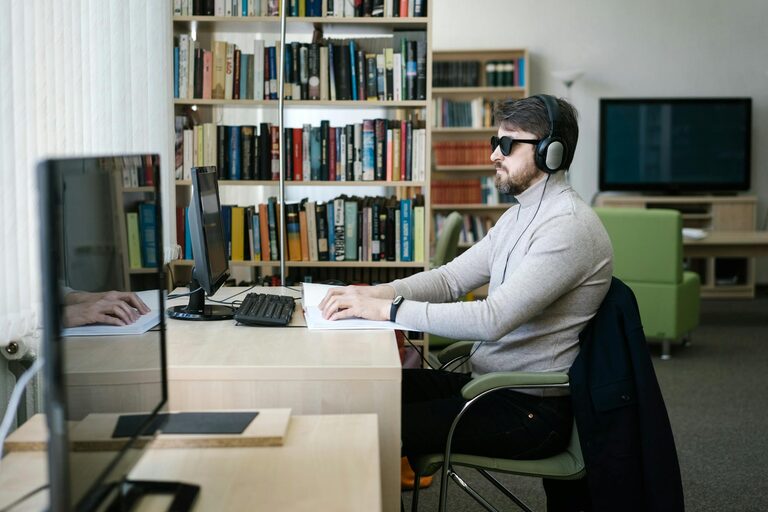In today’s digital world, many of us spend hours every day looking at screens—whether for work, study, or entertainment. While screens have become an essential part of our lives, prolonged screen time can cause discomfort and strain your eyes. Understanding how to protect your eyes during these long hours is key to maintaining good eye health and preventing digital eye strain or discomfort.
In this post, we’ll explore practical and easy-to-follow strategies to soothe your eyes and keep them healthy no matter how many hours you spend in front of a screen.
What is Digital Eye Strain?
Digital eye strain, also known as computer vision syndrome, refers to a group of eye and vision-related problems resulting from prolonged use of computers, tablets, smartphones, and other digital devices. Symptoms often include:
– Eye fatigue or tiredness
– Dry or irritated eyes
– Blurred or double vision
– Headaches
– Neck and shoulder pain
These symptoms arise because our eyes work harder to focus on digital text and images, and because screen glare and blue light can strain the eyes.
Tips to Protect Your Eyes During Screen Time
1. Follow the 20-20-20 Rule
One of the simplest and most effective techniques to reduce eye strain is the 20-20-20 rule. Every 20 minutes, take a 20-second break and look at something at least 20 feet away. This allows your eyes to relax and reduces fatigue caused by focusing on a screen up close for too long.
2. Adjust Your Screen Setup
Proper screen setup can significantly ease the strain on your eyes. Keep these points in mind:
– Position your screen about an arm’s length (20-28 inches) away.
– The top of the screen should be at or slightly below eye level so you look slightly downward at it.
– Reduce glare by using an anti-glare screen filter or adjusting lighting and window shades.
– Adjust your screen’s brightness and contrast to comfortable levels—not too bright or too dim.
3. Use Proper Lighting
Bright overhead lighting or glare from windows can increase eye strain. Try to:
– Work in a well-lit room with diffused lighting that reduces glare.
– Avoid harsh fluorescence or direct light hitting your screen or eyes.
– Use adjustable desk lamps for focused lighting when needed.
4. Blink Often and Use Artificial Tears
When staring at screens, people tend to blink less frequently, which can cause dry eyes. Remember to blink often to keep your eyes moist. If dry eye symptoms persist, consider using lubricating eye drops (artificial tears) to soothe and hydrate your eyes.
5. Take Regular Breaks
Besides the quick 20-20-20 breaks, it’s important to take longer breaks away from screens throughout your day. Stand up, stretch, walk around, or focus on something in the distance. This not only helps your eyes but also encourages better posture and reduces physical strain.
6. Adjust Text Size and Screen Settings
To reduce squinting and eye fatigue:
– Increase text size and zoom in when possible.
– Use high-contrast color schemes that are easier on the eyes.
– Enable “night mode” or blue light filters on your devices in the evening to reduce exposure to blue light, which can interfere with sleep and increase eye strain.
7. Maintain Good Posture
Proper posture supports eye comfort. Sit comfortably with your back straight, feet flat on the floor, and shoulders relaxed. Poor posture can cause neck and shoulder strain that can indirectly contribute to eye discomfort.
8. Keep Your Devices Clean
Dust, fingerprints, and smudges on your screen can reduce clarity and increase eye strain. Regularly clean your screen with appropriate cleaning solutions and a soft cloth.
9. Get Regular Eye Checkups
Routine eye exams are important to catch vision problems early and ensure your glasses or contact lens prescription is up to date. Ask your eye doctor about specialized computer glasses if you spend long hours on digital devices.
Healthy Habits Beyond Screen Time
Taking care of your eyes extends beyond just how you use your screen. Here are a few additional tips:
– Stay hydrated to support eye moisture.
– Eat a balanced diet rich in vitamins A, C, and E, along with omega-3 fatty acids, which support eye health.
– Get enough sleep to give your eyes time to rest and repair.
—
Screen time is here to stay, but it doesn’t have to come at the expense of your eye comfort. By incorporating these simple habits into your daily routine, you can enjoy your digital devices without the strain and discomfort that often come with prolonged use. Make your eyes a priority today!



